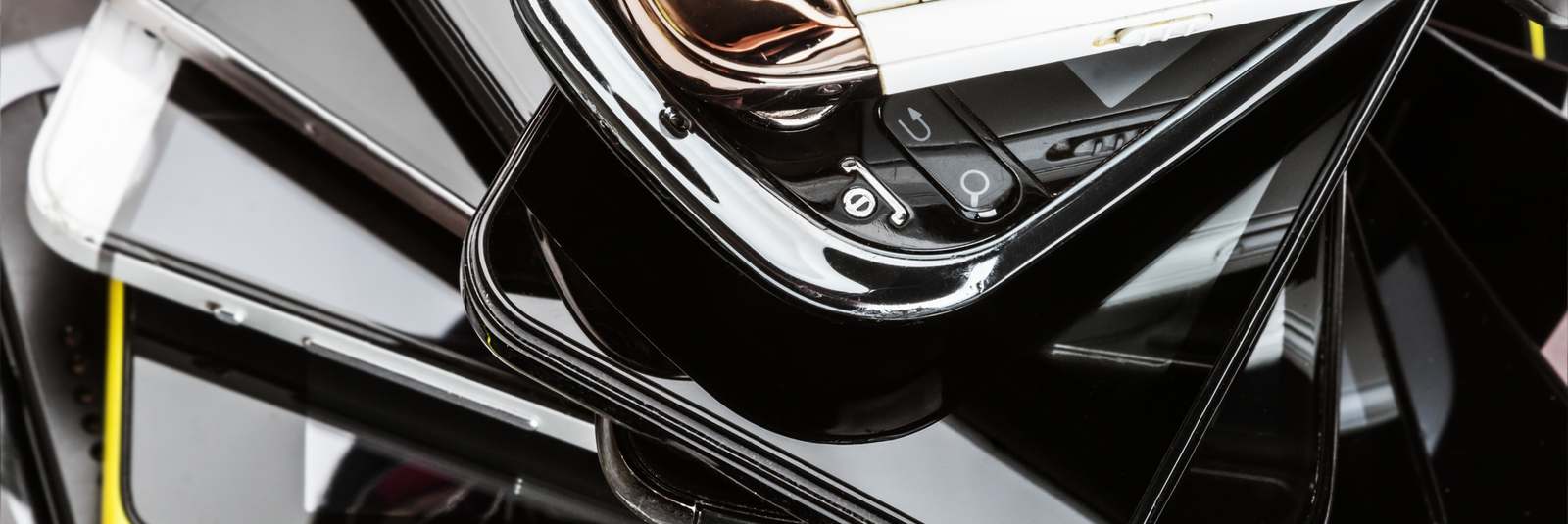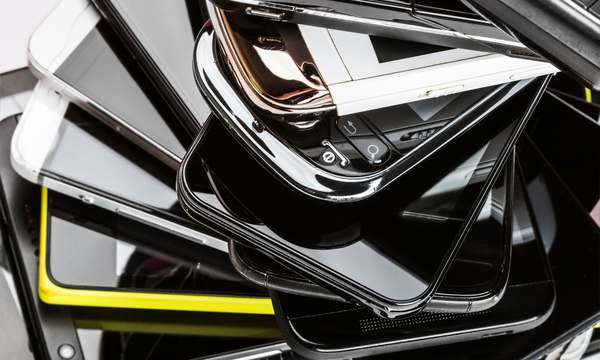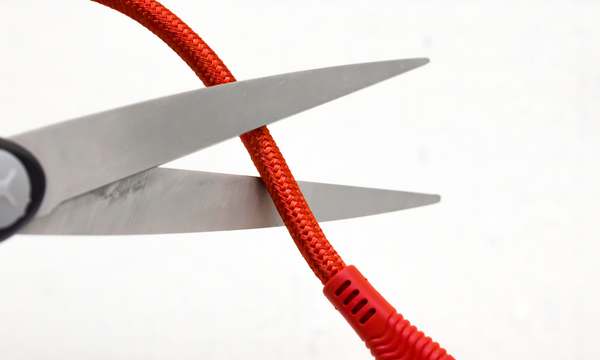
What was the first smartphone?
It’s the IBM Simon. This dates back to 1994, it was an analogue cellular phone but had email, calendar and fax functions. The touch screen user interface even included predictive text.
But as with any good answer we must show our working and look at alternatives. The website The Verge is claiming that the first real smartphone was the Handspring Visor, a mash up of a Palm Pilot and a phone. The Verge has clearly produced a fascinating documentary about the Visor, but secretly knows that it’s not the first smartphone, having introduced the weasel word “real”, claiming the Visor to be the world’s first *real* smartphone.
There are other claimants to the title but we needed an expert, so we spoke to the expert, Ben Wood (pictured), co-founder of the Mobile Phone Museum, which has over 2,000 mobile phones in its collection. Ben points out that the first device to use the term “smartphone” in its marketing literature was the Ericsson R380, even that he explains was based on an earlier device, the Penelope GS-88 concept phone.
“But”, argues Ben, “There's also a few other products, like the Motorola MAP phone, the Psion Odin project. And you could argue things like Motorola Marco and Voyager and the Sony Magic Cap devices.”
The Marco can be seen as the grandparent of the iPhone, as it was an Apple Newton OS device with communications, it did not however support voice, as it used the ARDIS protocol and so was more like a two-way pager. Magic Cap was one of a proliferation of mobile operating systems in the mid-1990s.
Odin, was a joint-venture between Motorola and Psion. While Psion dominated the PDA market it didn’t have the engineering skills for adding radio. Psion saw the partnership as the future of the business, so when Motorola killed the project, it hit Psion very hard. Ben describes Odin as “mythical” having never seen one “I think only five got built”.
|
GET CW JOURNAL ARTICLES STRAIGHT TO YOUR INBOX Subscribe now |
One definition of a smartphone might be the ability to run third-party apps.
Ben disagrees: “This was an age-old challenge that we had when I worked at Gartner. We were trying to define a smartphone in the early 2000s in terms of what it was and whether a Blackberry was a smartphone or not, because it had Java apps and was it extensible and all of those sorts of things. But I think it's a very nebulous definition. I think it's more in the eye of the beholder.”
It’s a statement which chimes with that used by the contemporary editor of What Mobile magazine. We all knew what was, and what was not a smartphone, but tightening it down to specifications proved impossible.
In an age when phones were small and elegant, and smartphones big and clunky the editor, who will remain nameless, nailed it with a definition: “If when you walk down the street using it you look like a dick, then it’s a smartphone”. Times have changed and today even walking and talking to a hidden headset is acceptable.
Another candidate might be the Nokia Communicator, Ben says “the Communicator is another very, very good shout because the Communicator was, in March 1996, one of the first smart phones. It was a highly integrated device and it was certainly a device that proved to be an extremely rich seem of intellectual property for Nokia subsequently.” It was a very useable productivity tool, has Ben explains “And for things that would seem completely alien now, but the fact that it could send and receive faxes. To be able to receive a fax digitally on the move was revolutionary. It was a game changer.”
One interesting phone was the Alcatel One Touch Com which Ben unmasks as a rebadged Sharp device, “It was the Sharp MCG-1, which was launched in 1998, but was announced in 1997, one of the most innovative phones on the market. It combined a mobile phone with a personal organiser as well. It was incredible. It was a really, really interesting product.
Thanks to his inside contacts Ben is an expert on devices which never shipped, this is true of the trailblazing Nortel Orbiter “It was Open Linux and some Java”.
But when push comes to shove it’s the IBM Simon which was the first smartphone, and most definitely not the iPhone.
|
GET INVOLVED WITH THE CW JOURNAL & OTHER CW ACTIVITIES |
Simon Rockman bridges writing about technology and implementing it. As the editor of UK5G Innovation Briefing he visits many of the 5G applications. As Chief of Staff at Telet Research he works with a team installing 5G networks in not-spots. An experienced technology writer, he was the editor of Personal Computer World in the late 1980s and went on to found What Mobile magazine which he ran for ten years, and has reviewed over 300 handsets. As the mobile correspondent for The Register, he championed CW writing a number of articles supporting the organisation. He has also had senior roles in telecoms having been the Creative Experience Director at Motorola where he looked at new uses for mobile and Head of Requirements at Sony Ericsson where we worked on innovative devices at entry level. He was the Head of the Mobile Money Information Exchange at the GSMA and has launched Fuss Free Phones an MVNO aimed at older users











